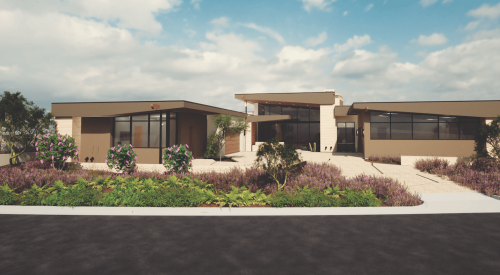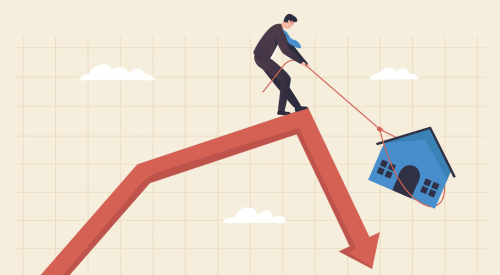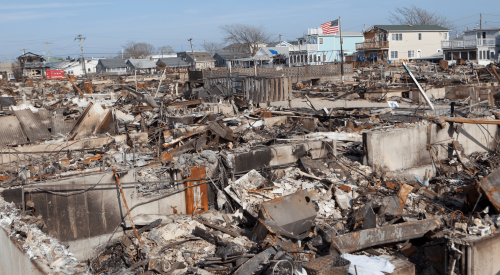America has a current shortfall of about 1.5 million homes. As our nation’s population continues to grow, more first-time homebuyers are entering the market, while more![]() established homeowners are remaining in their homes for longer than previous generations. The gap between what is available and what is needed continues to widen, and pressure on home building is increasing, even as ongoing challenges make it difficult to increase the housing supply.
established homeowners are remaining in their homes for longer than previous generations. The gap between what is available and what is needed continues to widen, and pressure on home building is increasing, even as ongoing challenges make it difficult to increase the housing supply.
The constraints—a shortage of available labor and land, high building material prices, NIMBY (not-in-my-backyard) opposition to new homes, and overly restrictive regulations on new residential construction—aren’t new. And this year, high mortgage interest rates brought on by the Federal Reserve’s efforts to lower inflation have compounded the problem. All of these factors are contributing to a challenging business environment for home builders and higher housing costs for families.
RELATED
- NAHB Housing Policy Briefing: New Legislation Worsens Housing Affordability
- HBAs Receive Financial Assistance to Help Tackle Housing Affordability Issues
- What Will It Take to Resolve the Housing Affordability Crisis?
Demand for owner-occupied homes has weakened as prospective buyers are priced out. Home builders have been somewhat insulated from this decrease in demand because resale inventory is half of what it should be, and more buyers are turning to new builds. But the economic factors are not in favor of the housing industry right now. Most notable on the supply side, high interest rates are increasing financing costs for builders and are limiting land acquisition and development.
Sensible Land-Use Laws to Ensure Housing Opportunity
Land development is a key component here. NIMBY opposition to new development is a major obstacle. Most people believe it’s important to provide housing that’s affordable to all households. But when new housing—especially higher-density housing—is proposed, many of those same people show up at public meetings to oppose the new development. And powerful interest groups are pushing for more restrictive land-use laws at the state and local levels, making it more difficult and more expensive for builders to secure permits and develop lots to build much-needed homes.
The National Association of Home Builders (NAHB) works with local and state home builders’ associations to push for sensible land-use laws, engaging at the grassroots level to make sure citizens and policymakers understand the value of homeownership and housing opportunity.
As we move toward a potential rebound in 2024, there will be limits on the pace and extent of any housing industry recovery. Part of that will be lot availability and restrictions on land development. It could also be increases in the cost of lumber and other materials, though building materials prices have eased considerably during 2023. In the long run, it’s the number of construction workers available to the industry that will be key.
A Strong Workforce Is Essential for Home Building's Future
During the pandemic building boom, some analysts optimistically suggested we might see 1.4 million single-family starts per year, which would have been more than 200,000 more than recent cycle highs. But that would have been impossible because to get to that 1.4 million level, we would have needed 300,000 to 400,000 more construction workers, and since the 2008 housing crash, residential construction has been critically short of skilled workers. Social pressure against the trades has discouraged thousands of young people from pursuing home building as a career. Those same pressures have also led to significant cuts in funding for job training programs.
The success of our industry will not happen without more workers, more entrepreneurs, and more enthusiastic future business owners. A strong workforce is our buffer against uncertain economic forecasts and turbulent influences on supply and demand.
Home building success comes from a functional system: lot availability, realistic land development regulations, community buy-in, and ultimately, a healthy labor force. NAHB will continue to utilize its expertise, connections, and grassroots influence to support you because building your business is our business.
W2W4
The New American Home (TNAH), the Official Show Home of International Builders’ Show 2024, is a 7,722-square-foot luxury residence brimming with state-of-the-art features and a resort-like ambiance in nearly every room. IBS 2024 registered attendees may tour the home during Show hours, Feb. 27-29. Complimentary shuttle buses will depart every half hour from the Las Vegas Convention Center (LVCC). Shuttle bus tickets will be distributed each day on a first-come, first-served basis from the TNAH booth (C10) in the Central Lobby of the LVCC beginning at 7:30 a.m. Visit tnah.com for more information. Register for IBS at buildersshow.com.
NAHB’s Eye On Housing provides an in-depth assessment of the latest housing industry data. Want to know what the numbers mean for the industry? NAHB economists offer detailed analysis of the data, including housing starts, sales, GDP, CPI, jobless claims, and more. Monthly surveys such as the NAHB/Wells Fargo Housing Market Index take the pulse of the single-family housing market. Find out more at eyeonhousing.org.













